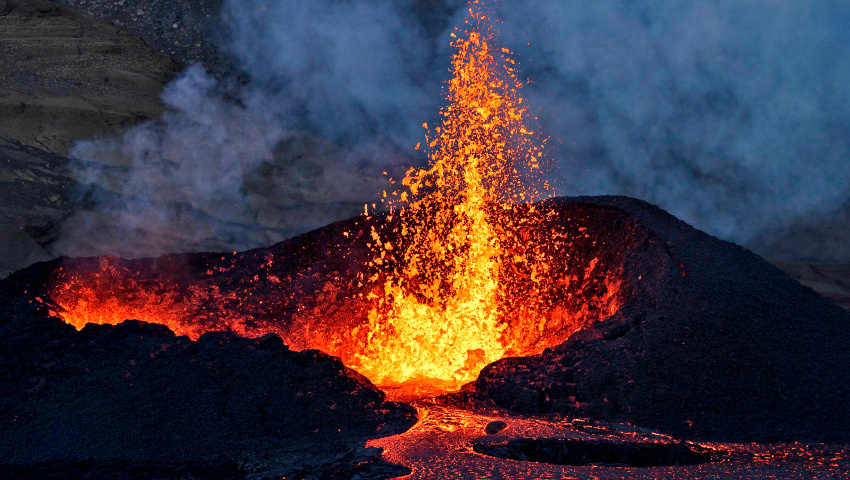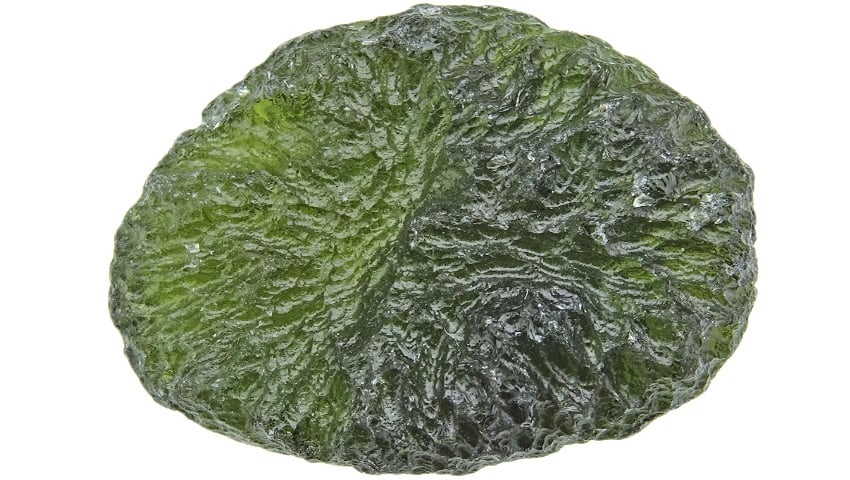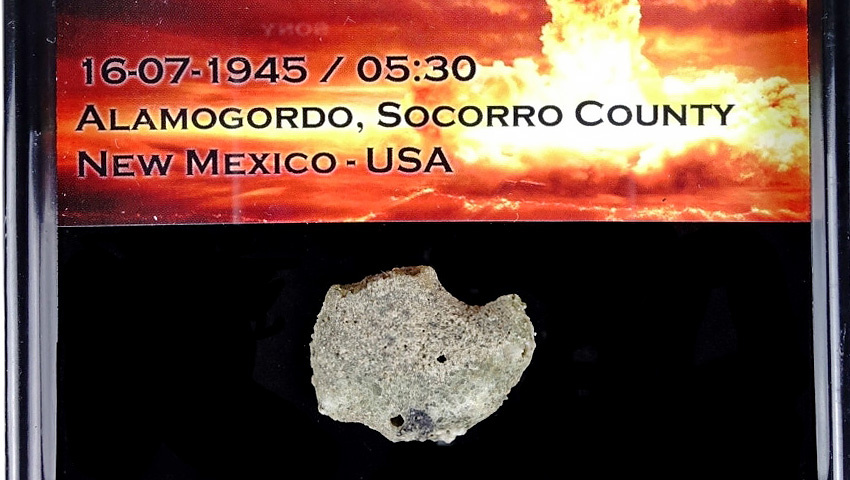From moldavite to fulgurite, how is natural glass formed?
- Posted on
- By Bart Verboven
- Posted in fulgurite, glass, lybian glass, moldavite, Natural glass, obsidian, tektite, trinitite

When we think of glass, many of us picture it as a man-made product that we use every day. But did you know that nature also has its own versions of glass? Indeed! Volcanoes, lightning, and even meteorites all play a role in forming natural glass. And believe it or not, even the very first atomic bomb once unintentionally produced glass. Curious about how that happens? Read on quickly!
Scientific Definition of Glass

Scientifically, glass is not just a material. It is a unique state of matter. When a molten substance cools rapidly before a crystalline structure can form, we get glass. Unlike crystals, where atoms are arranged in an ordered pattern, the atoms in glass haven't had the time to organize themselves this way. Therefore, glass is often described as a 'rigid liquid'.
Examples of Natural Glass

In nature, we find beautiful examples of this phenomenon. Take obsidian, also known as volcanic glass. This rock cooled so quickly that it has a glassy structure. Then we have tektites like moldavite and Libyan glass, which were formed by the immense heat and force of meteorite impacts millions of years ago. And let's not forget fulgurites, which are formed when lightning strikes sand, resulting in fragile tubes of melted sand. Let's take a closer look at the different types of natural glass.
Obsidian: The Volcanic Glass

Obsidian is a natural glass that originates deep within the Earth. During volcanic eruptions, when magma reaches the Earth's surface, obsidian can form under certain conditions. This volcanic glass is composed of more than 70% non-crystallized silica. Because the lava cools rapidly, there is no time for crystal formation, giving obsidian its glassy appearance. The color variations in obsidian are numerous. While some specimens are clear and nearly transparent due to a lack of impurities, others are deep black, often due to the presence of microscopic crystals of minerals like magnetite. Additionally, the microscopic crystals of feldspar or mica create the sparkling reflections in rainbow obsidian.
Tektite, Meteorite Glass

Tektites are formed when Earth material melts due to the impact of a meteorite, then is launched into the atmosphere and later falls back to Earth. During their journey through the atmosphere, they partially melt again, often giving them an aerodynamic shape. The name 'tektite' comes from the Greek word 'tektos', meaning 'melted'. They can range in color from green and brown to gray and black and are mainly composed of silica, with traces of elements such as aluminum, iron, and magnesium. Although tektites have a glassy structure, they contain no water, which distinguishes them from obsidian.
Moldavite, Green Tektite

Moldavite is perhaps the most well-known tektite and is distinguished by its unique green color. About 14 million years ago, an asteroid with an impressive diameter of about a kilometer struck our planet. This collision led to the formation of the Nördlinger Ries crater, with an imposing diameter of 24 km. During this catastrophe, the asteroid was not only pulverized, but molten fragments were also hurled into the atmosphere. After a journey of hundreds of kilometers through the air, these 'glass droplets' landed in the area we now know as the Czech Republic. These special fragments are called moldavite, a name derived from the Moldau River.
Libyan Glass, Gold Tektite

Libyan glass is another remarkable tektite. This tektite was formed about 28 million years ago by the impact of an immense meteorite and is now found in the Egyptian desert near the border with Libya. What makes this desert glass so unique is its striking yellow color, sometimes interspersed with brown hues. These colors reflect the various sand layers from which the glass was formed. It is the only tektite on Earth with such a striking yellow hue, earning it the affectionate nickname 'gold tektite'. The beauty of this desert glass has been known for thousands of years. In the time of the pharaohs, it was considered a valuable gemstone. It was even used in the scarab pendant of Tutankhamun.
Agni Manitite, Pseudo Tektite

The Agni Manitite, categorized under the pseudo-tektites, has raised questions for some time. At first glance, this stone closely resembles a tektite. But upon closer inspection, the Agni Manitite turns out to be an obsidian. How is this possible? Although the stone has the outward characteristics of a tektite, it was not formed by a meteorite impact. Everything points to this stone originating from the powerful volcanic eruptions of Indonesia. During these eruptions, magma was ejected into the air with great force, where it solidified into volcanic glass. It then fell back to Earth in the form of glass droplets, just like tektites. This is why the Agni Manitite is classified as part of the obsidian family. The name "Agni Manitite", derived from Sanskrit, means "pearl of fire", which is very appropriate in this context. Other similar pseudo-tektites include saffordite and colombianite.
Fulgurite, Lightning Glass

A completely different form of natural glass can be found in fulgurite. This time, it is not a meteorite impact or a volcanic eruption that is the cause, but lightning! When lightning strikes, sand is melted into glass, another name for fulgurite is 'petrified lightning'. This results in irregular tubes that take the shape of the lightning strike. Fulgurite is often found in the desert, and although thunderstorms are rare here, they do occur and often in extreme forms. Most fulgurites are found in dune pans; this is the place where lightning strikes most often because the groundwater is closest to the surface here.
Trinitite, Atomic Glass

Another way glass can form is by detonating an atomic bomb in the desert. Although we cannot really speak of natural glass in this case, the formation of glass after the very first atomic test is certainly worth mentioning. On an early morning, at half-past six on July 16, 1945, an event occurred that would change the course of history. In the quiet desert of New Mexico, the sky lit up with the power of 19,000 tons of TNT: the very first nuclear explosion, a force unseen until then. In the aftermath of this immense explosion, a crater was left filled with a glassy substance, called trinitite. This material, which mainly consists of silicon dioxide, is the result of melted desert sand. Depending on the iron content in the sand, trinitite can range from green to red hues.
